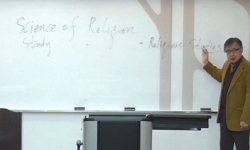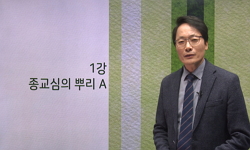Relations of the religion and play is complicated and close, so called Religion in this paper, are Saishe(賽社, an old custom of offering worship with alcohol and food to the god of farm when farming is finished in the fall), Qunuo(驅儺, a ceremon...
http://chineseinput.net/에서 pinyin(병음)방식으로 중국어를 변환할 수 있습니다.
변환된 중국어를 복사하여 사용하시면 됩니다.
- 中文 을 입력하시려면 zhongwen을 입력하시고 space를누르시면됩니다.
- 北京 을 입력하시려면 beijing을 입력하시고 space를 누르시면 됩니다.

지방희와 종교의 관계 -나희 사묘(寺廟)극장을 중심으로- = Relations of Regional Plays and the Religion-around Nuo play(儺戱) Temple Theater as the Subject of Discussion
한글로보기https://www.riss.kr/link?id=A60102954
- 저자
- 발행기관
- 학술지명
- 권호사항
-
발행연도
2012
-
작성언어
-
-
주제어
희곡 ; 종교 ; 나희 ; 극장 ; 지방희 Chinese opera ; religions art ; nuoxi ; theatre ; local opera
-
KDC
900
-
등재정보
KCI등재
-
자료형태
학술저널
-
수록면
7-37(31쪽)
- 제공처
- 소장기관
-
0
상세조회 -
0
다운로드
부가정보
다국어 초록 (Multilingual Abstract)
Relations of the religion and play is complicated and close, so called Religion in this paper, are Saishe(賽社, an old custom of offering worship with alcohol and food to the god of farm when farming is finished in the fall), Qunuo(驅儺, a ceremony of driving away the evils) and RuShiDao(儒釋道, Confucianism, Buddhism and Taoism) ; and so called play, here means any kind of art telling a story, including traditional opera which tells a story with only dance and songs. Ancestors` Saishe(賽社) and Qunuo(驅儺) contain dramatic elements, and it gave birth to She play(社戱) and Nuo play(儺戱) which are called Nuo play in general. Even though Nuo ceremony(儺儀) is not only the sourse where play and traditional opera originated from, but we could see from pre-Qin Nuo ceremony that Fangxiangshi(方相氏) driving-away evil spirit ceremony and candle worship were the plays for the ancestors. Acrobatics rose in the six-court temple theater, actually it was the cradle where plays competed each other and to be incubated in. In Tang Dynasty it developed even more into a good spectacle; and still now in temples there were carnivals of celebration all over the country, and in the temple squares, all kinds of plays, acrobatics and local operas are being performed now and then. The contents of the plays are to call in the gods, driving away evil spirits and diseases, to repel evils and misfortune, and to pray for luck and good fortune, the play sometimes praises the god that they are calling in, sometimes the play is about the gods and the evils, or tells a history and at times it is a folk customs play. Mulian opera(目連戱) mixed religion, customs, acrobatics and opera together, after a long development, it shows a clear tendency of getting close to Nuo play, From the relations between temple theater and opera & acrobatics, it was found that plays are to worship gods and to ask for good fortune, so stages are equipped in the temples and temple squares are places where all kinds of plays get together, and it has become a deep-rooted culture with a long history of our nation. Temple theaters are places for plays to compete each other, and also an incubator where plays could interact with each other and where culture to be developed in. However, acrobatics and the plays are not to entertain the gods but the people. And the contents and style of Nuo play shows that performance and ceremony go together, and also it shows the traditional culture of our nation that properties go with the joy and wine offering goes with the joy.
동일학술지(권/호) 다른 논문
-
향인양(嫦人陽)에서 양희(陽戱)까지 -제의연극과 관상용 연극의 관계 문제에 대하여
- 한양대학교 동아시아문화연구소
- 강보성 ( Bao Cheng Kang )
- 2012
- KCI등재
-
- 한양대학교 동아시아문화연구소
- 엽명생 ( Ming Sheng Ye )
- 2012
- KCI등재
-
- 한양대학교 동아시아문화연구소
- 김양주 ( Yang Joo Kim )
- 2012
- KCI등재
-
도시 공연 형태의 발전 -중국·일본 ``한단몽`` 계열 작품을 중심으로
- 한양대학교 동아시아문화연구소
- 아리사와아키고 ( Akiko Arisawa )
- 2012
- KCI등재




 KISS
KISS







